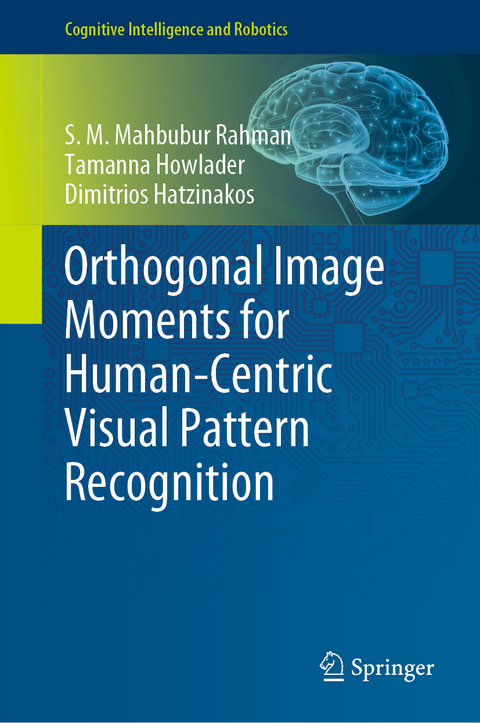
Orthogonal Image Moments for Human-Centric Visual Pattern Recognition
Springer Verlag, Singapore
978-981-329-944-3 (ISBN)
S. M. Mahbubur Rahman received his Ph.D. in Electrical and Computer Engineering (ECE) from Concordia University, Montreal, QC, Canada, in 2009. Currently, he serves as a Professor at the Department of Electrical and Electronic Engineering (EEE), Bangladesh University of Engineering and Technology (BUET), Dhaka, Bangladesh. In 2017, he was a Visiting Research Professor of the EEE at the University of Liberal Arts Bangladesh. He was tenured at the University of Toronto as an NSERC (Natural Sciences and Engineering Research Council) Postdoctoral Fellow in 2012. He has a strong record of research in his area, which includes contributing to more than 50 publications in SCI-indexed journals and the peer-reviewed proceedings of international conferences. He has served as an Associate Editor for an SCI-indexed journal: Circuits, Systems, and Signal Processing, published by Springer Nature. His research interests are in the areas of biometric security systems, intelligent transportation systems, cognitive science, stereo vision, virtual reality, biomedical visualization, human–computer interaction, video surveillance, signal processing and communication systems. Tamanna Howlader received her Ph.D. in Mathematics from Concordia University, Canada. Currently, she is a Professor of Applied Statistics at the Institute of Statistical Research and Training (ISRT), University of Dhaka, Bangladesh. She is a statistician who enjoys interdisciplinary research. The articles and book chapters that she has published demonstrate novel statistical applications in the areas of image processing, computer vision, pattern recognition and public health. Tamanna has received several prestigious awards including the Sydney R. Parker Best Paper Award from the Journal of Circuits, Systems and Signal Processing published by Springer Nature. She is a member of the International Statistical Institute. Dimitrios Hatzinakos received his Ph.D. in Electrical Engineering from Northeastern University, Boston, MA, in 1990, and currently serves as a Professor at the Department of Electrical and Computer Engineering, University of Toronto (UofT), Toronto, Canada. He is the co-founder and since 2009 the Director and the Chair of the management committee of the Identity, Privacy and Security Institute (IPSI) at the UofT. His research interests and expertise are in the areas of multimedia signal processing, multimedia security, multimedia communications and biometric systems. He is the author/co-author of more than 300 papers in technical journals and conference proceedings; he has contributed to 18 books, and he holds seven patents in his areas of interest. He is a Fellow of the IEEE, a Fellow of the Engineering Institute of Canada, and a member of the Professional Engineers of Ontario, and the Technical Chamber of Greece.
1 Introduction.- 2 Image Moments.- 3 Face Recognition.- 4 Expression Recognition.- 5 Fingerprint Classification.- 6 Iris Recognition.- 7 Hand Gesture Recognition.- 8 Conclusion.
| Erscheinungsdatum | 06.11.2019 |
|---|---|
| Reihe/Serie | Cognitive Intelligence and Robotics |
| Zusatzinfo | 42 Illustrations, color; 16 Illustrations, black and white; XII, 149 p. 58 illus., 42 illus. in color. |
| Verlagsort | Singapore |
| Sprache | englisch |
| Maße | 155 x 235 mm |
| Themenwelt | Informatik ► Grafik / Design ► Digitale Bildverarbeitung |
| Informatik ► Theorie / Studium ► Künstliche Intelligenz / Robotik | |
| ISBN-10 | 981-329-944-4 / 9813299444 |
| ISBN-13 | 978-981-329-944-3 / 9789813299443 |
| Zustand | Neuware |
| Informationen gemäß Produktsicherheitsverordnung (GPSR) | |
| Haben Sie eine Frage zum Produkt? |
aus dem Bereich


